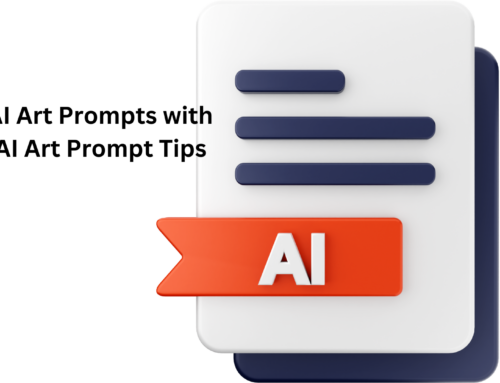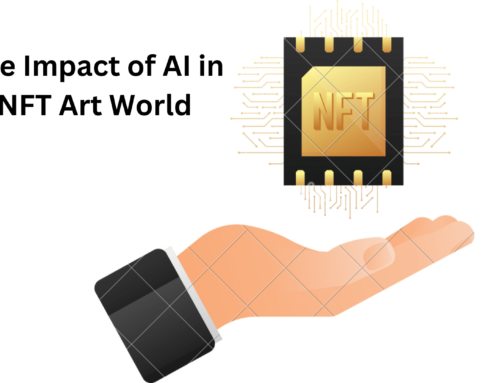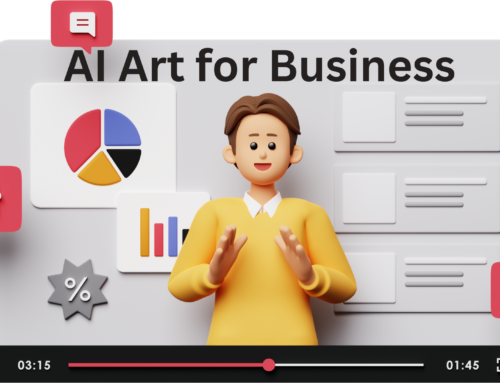
In recent years, the world of graphic design has undergone a remarkable transformation, thanks to the rapid advancements in artificial intelligence (AI) technology. As AI continues to infiltrate various industries, it has now found its way into the creative realm, revolutionizing traditional graphic design practices. With the advent of AI-powered art tools, graphic designers are experiencing a paradigm shift in their work processes, creativity, and overall design capabilities. This topic aims to explore the widespread impact of AI art tools in revolutionizing graphic design, delving into the advantages, challenges, and potential implications that arise from this bold technological leap.
Graphic design is increasingly relying on machine learning (ML) and artificial intelligence (AI). AI algorithms have the ability to automate routine chores, foster original thought, and enhance design workflows. In graphic design, AI made its appearance to save the day. As per Mercy Lilian, a financial expert at FlexiPCB, AI holds great potential in the design world.
Machine learning and personalization
Additionally, these technologies are being leveraged to improve user experience, customise designs, and make real-time judgements depending on user preferences. AI is set to play an even bigger role in graphic design in the future, revolutionising the field and the way designs are produced.
Graphic design is becoming significantly impacted by artificial intelligence and machine learning, both in terms of how designs are produced and presented to users. Abhijeet Parmar SEO Executive At Elsner Technologies believes that AI is automating graphic design through generative design, automated image editing, layout and composition suggestions, smart templates and customization, style transfer and artistic effects, and assistance in branding and logo design.
AI is shaping the future of graphic design, however, according to Paul, the founder of UnlimitedTools.Co the potential job loss due to AI in graphic design is minimal, as it primarily alters the role of designers, pushing them towards more strategic and creative tasks.
-
Automated Design
The mechanical design generates plans, layouts, and graphics using AI algorithms with little assistance from humans. Machine learning algorithms can accomplish this by learning from existing designs and creating new tactics based on that learning.
Adam Willson, Co-Founder of Accelerate-Solar.com quoted “AI is helping to automate the process of graphic design, making it easier and faster to create stunning visuals. It can be used to generate visuals from scratch, as well as to enhance existing designs. AI can also help to identify patterns in data, which can be used to create visually appealing designs. The benefits of AI in graphic design are numerous.”
By allowing folks without substantial design experience to participate in the design process, mechanical design can help visual artists save time and money.
-
Personalization
Future graphic design will be able to personalise on an enormous scale thanks to AI. Here are some potential outcomes for this:
- User-driven customization: AI algorithms will examine user preferences and behaviour to provide unique designs that appeal to their preferences.
- Automated design recommendations: Taking into account elements like the brand’s image, the target market, and the budget, AI can recommend designs depending on a customer’s needs. AI will enable designers to make modifications to designs in real time, enabling quick iteration and optimisation.
- Customised brand assets: AI will produce distinctive logos, typography, and other visual elements specifically tailored to the brand, giving it a more distinctive appearance and feel.
-
Design templates with AI power
AI-powered design templates will use client data to dynamically modify designs in real-time, giving each user a distinct appearance.
AI will enable graphic designers to produce more individualised and pertinent designs for specific clients, resulting in a more appealing and useful visual experience.
- Customized design: AI may create unique designs depending on user preferences including style, theme, and branding.
- Enhanced data visualisation: By analysing and presenting data clearly and straightforwardly, AI can aid in the creation of more effective data visualisations.
- Real-time collaboration: AI can let numerous designers work together in real-time, enabling quicker iterations and decision-making.
Artificial intelligence can foresee future design requirements and offer creative solutions by analysing trends, user behaviour, and design history.
-
Greater Efficiency
Automated tasks: AI is capable of automating time-consuming and repetitive operations like resizing, colour correction, and simple layout creation.
Better colour selection: AI can examine photographs and make colour suggestions based on branding rules, emotions, and colour theory.
-
Statistical Analysis
In order to forecast and analyse design trends, customer preferences, and behaviour as well as to automate tedious design processes, predictive analytics in graphic design uses machine learning algorithms. By allowing designers to swiftly test and iterate on designs, spot emerging design trends, and automate time-consuming chores, AI can play an increasingly bigger role in graphic design in the future.
-
Support for different languages
AI can assist designers in creating designs that are simple to translate into a variety of languages, making it simpler for non-native speakers to understand the information offered.
-
Font and Color Selection
Gopal from eBizneeds quoted, “AI algorithms can analyze the intended mood, brand identity, or target audience of a design project and provide recommendations for suitable fonts and color palettes. This automation helps designers make informed decisions and speeds up the process of choosing appropriate design elements.”
-
Assistance with Virtual Reality
AI can help with the creation of designs for virtual reality, making them more usable for people with physical limitations and enabling them to experience the designs in a more usable way. AI can provide alternate ways of producing and consuming graphics, thereby assisting in making graphic design more accessible to individuals with disabilities.

Conclusion
Ultimately, artificial intelligence and machine learning are changing visual design and will do so in the future. Sufyan Mughal from Gaming Tech Review said, “The rise of AI in graphic design does not necessarily mean the end of graphic designers. While AI can automate certain aspects of the design process, it cannot replicate human creativity, intuition, and strategic thinking. “Similarly, Henri from AI Engineer Hub quoted, “The rise of AI in graphic design does not spell job losses but rather a shift in job roles. With AI handling the more mundane aspects, designers can focus on creativity, strategy, and client communication—areas where human expertise is irreplaceable.”
You don’t want to be left behind while the world is moving forward with AI Tool Art and Content Tools. Let me introduce you to Airbrush, the newest cutting edge AI Image processing tool in the market! This tool allows you to quickly and easily transform your photos into stunning works of art, with just a few clicks.
So why wait? Signup Airbrush today and experience the power of AI for yourself!








Leave A Comment